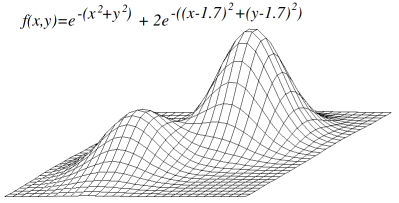
Local Maximum by Headsplatter, Public Domain.
Rational aesthetics are an infinite improvement on vapid, asset-class aesthetics but (and this is identifying an opportunity, not an objection) Gödel. If we cast art’s reason as AI-style search (not to fundamentally describe it as such, but to make a hopefully useful comparison) then we encounter the problem of “local maxima”. This is where a direct search of a problem space finds only the closest highest value, not the globally highest one.
In human creativity we can rationally use irrationality to break free of local maxima. Whether creativity theory,surrealist techniques, or pure randomness. Beyond the details of any one technique, what is important is that to get further, we sometimes need to use irrationality (or arationality) for rational ends.
Mythology can be such a source of transformations (in the mathematical sense - we’re talking about search spaces here). Freed of the affective and significatory limits of fact, mythology can lead us to places and to lengths that we might not otherwise reach. This includes science fiction.
In guiding and constructing new possibilities (or at least finally addressing old problems) through aesthetics, mythology becomes hyperstition (in a general rather than numogram-centred sense). Where we (for a social media value of “we”) believe it is not possible or practical to change anything (for the better), it is rational to construct hyperstitional entities to treat the local maxima of ideology as damage and route around them.
This is haunted by the Big Lie and The Republic, but we do not need to deceive or believe for non- (and a-) existent entities to be historical causes. Just ask Cthulhu. Or Katak. Hyperstitional engineering is accelerationist aesthetics, artistic reason, because of its irrational content not despite it.